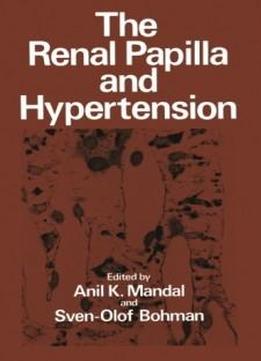
The Renal Papilla And Hypertension
by Anil K. Mandal /
2012 / English / PDF
4.9 MB Download
LOUIS TOBIAN There are many reasons for suspecting that the medulla
of the kidney is involved in the pathogenesis of hypertension.
Although our present knowledge does not permit the assignment of a
precise and exact role for the medulla, there are so many
indications of its involvement that this is an appropriate time for
the subject to be thoroughly reviewed, as Drs. MandaI and Bohman
have done in this volume. The involvement of the renal medulla in
hypertension was first strongly indicated by the studies of Eric
Muirhead. Studying renoprival hyperten sion, he demonstrated that
the injection of extracts of renal medulla could prevent this type
of hypertension in the dog, rabbit, and rat. Subsequently, a number
of experiments showed that implants of renal medulla could not only
prevent renoprival hypertension but also greatly reduce the level
of blood pressure in Goldblatt hypertension in the rat and rabbit.
It was later noted that the majority of the surviving cells in
these medullary implants were interstitial cells. Pitcock and
Muirhead were able to culture these interstitial cells, and
implants of the cultured cells lowered blood pressure in renoprival
hypertension and Goldblatt hypertension, particularly in the rat.
We were able to confirm these general observations by employing
implants of medulla in "postsalt" hypertension. The medullary
implants did indeed bring the blood pressure down.
LOUIS TOBIAN There are many reasons for suspecting that the medulla
of the kidney is involved in the pathogenesis of hypertension.
Although our present knowledge does not permit the assignment of a
precise and exact role for the medulla, there are so many
indications of its involvement that this is an appropriate time for
the subject to be thoroughly reviewed, as Drs. MandaI and Bohman
have done in this volume. The involvement of the renal medulla in
hypertension was first strongly indicated by the studies of Eric
Muirhead. Studying renoprival hyperten sion, he demonstrated that
the injection of extracts of renal medulla could prevent this type
of hypertension in the dog, rabbit, and rat. Subsequently, a number
of experiments showed that implants of renal medulla could not only
prevent renoprival hypertension but also greatly reduce the level
of blood pressure in Goldblatt hypertension in the rat and rabbit.
It was later noted that the majority of the surviving cells in
these medullary implants were interstitial cells. Pitcock and
Muirhead were able to culture these interstitial cells, and
implants of the cultured cells lowered blood pressure in renoprival
hypertension and Goldblatt hypertension, particularly in the rat.
We were able to confirm these general observations by employing
implants of medulla in "postsalt" hypertension. The medullary
implants did indeed bring the blood pressure down.











